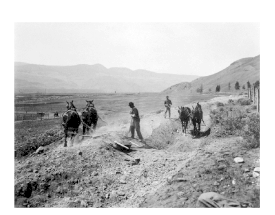Tragedy was an inevitable aspect of pioneer life and the Alberni Valley had its share.
The late Charles Taylor, introduced in last week’s BCChronicles, was the first person I ever interviewed—initially at the urging of my employer, the Victoria Colonist, then, when he and I became unlikely friends, by choice.
I say unlikely because he was 85, I a very green 19.
But we clicked and the result was a brief series of historical articles on little-known people and events of Alberni Valley history. More of Charles Taylor’s enjoyable reminiscences in next week’s Chronicles.
*******
PHOTO: Life was hard on the frontier in the ‘good old days,’ as these loggers could surely have attested. But who was there to take down their stories? Fortunately for posterity, Charles Taylor began to record Alberni history during the final years of his retirement in Victoria in the early 1960s. —BC Archives
Read More




















